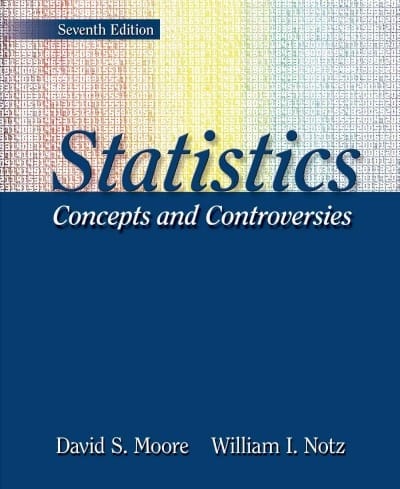Beavers and beetles. Ecologists sometimes find rather strange relationships in our environment. One study seems to show
Question:
Beavers and beetles. Ecologists sometimes find rather strange relationships in our environment. One study seems to show that beavers benefit beetles. The researchers laid out 23 circular plots, each 4 meters in diameter, 330 CHAPTER 15 Describing Relationships: Regression, Prediction, and Causation in an area where beavers were cutting down cottonwood trees. In each plot, they counted the number of stumps from trees cut by beavers and the number of clusters of beetle larvae. Here are the data:
Stumps: 2 2 1 3 3 4 3 1 2 5 1 3 Larvae clusters: 10 30 12 24 36 40 43 11 27 56 18 40 Stumps: 2 1 2 2 1 1 4 1 2 1 4 Larvae clusters: 25 8 21 14 16 6 54 9 13 14 50
(a) Make a scatterplot that shows how the number of beaver-caused stumps influences the number of beetle larvae clusters. What does your plot show?
(Ecologists think that the new sprouts from stumps are more tender than other cottonwood growth, so that beetles prefer them.)
(b) The least-squares regression line is larvae clusters = −1.286 + (11.894 × stumps)
Draw this line on your plot. (To draw the line, use the equation to predict y for x = 1 and for x = 5. Plot the two (x, y) points and draw the line through them.)
(c) The correlation between these variables is r = 0.916. What percentage of the observed variation in beetle larvae counts can be explained by straight-line dependence on stump counts?
(d) Based on your work in (a), (b), and (c), do you think that counting stumps offers a quick and reliable way to predict beetle larvae clusters?
Step by Step Answer:

Statistics Concepts And Controversies
ISBN: 9781429277761
7th Edition
Authors: David S Moore, William I Notz




